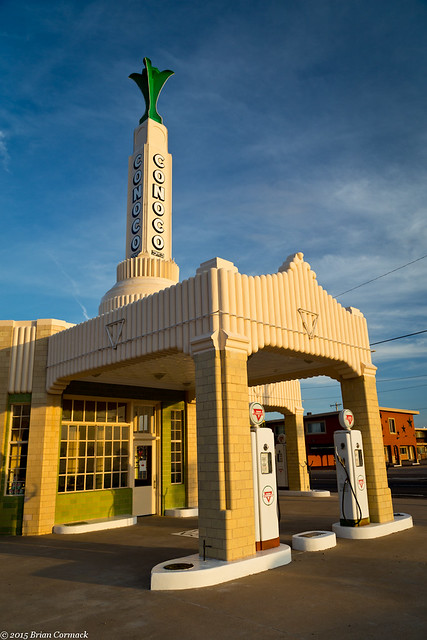
The sun began to set and it was dark by the time we arrived in Amarillo, our first pit stop of the trip. Since we were staying in Amarillo, we had to of course pay a visit to the Big Texan Steak Ranch. This huge restaurant is famous for giving away a free 72 ounce steak, but only if you eat the whole thing (including salad and potato) in under an hour. I had a measly 8 ounce steak and was stuffed, so I wouldn’t be up to the challenge. But apparently the Big Texan has recently started their own brewery and I was impressed with the beers that I sampled there (I was tempted to try 72 ounces of their beer, but we had an early start in the morning).
The next morning we headed out from Amarillo, making a brief stop at the Cadillac Ranch. The Cadillac Ranch is a large, somewhat random, outdoor art piece with 10 old Cadillacs halfway buried into a field on the outskirts of town. The angle of the Cadillacs is said to be the same of the Great Pyramid in Egypt. Decades of people spraypainting the cars have turned the Cadillacs into a hodgepodge of colors. The accumulated layers of paint is so thick that in many places it hangs down like stalactites.
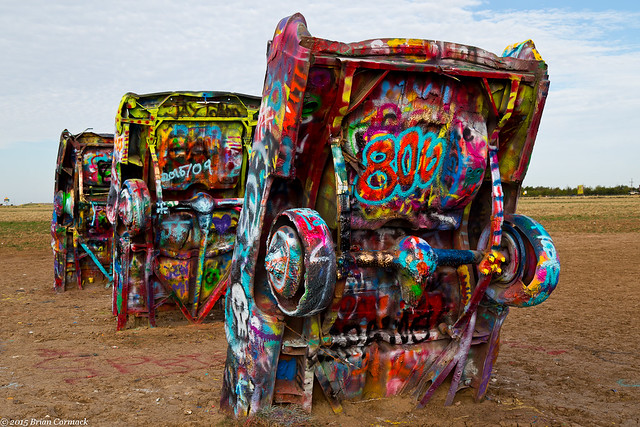
There was a group out there that morning painting one of the cars one solid color, using a large industrial paint blower. I didn’t think a heavy duty painter, and the strong Texas winds, would be a wise thing to stand next to (or downwind from).
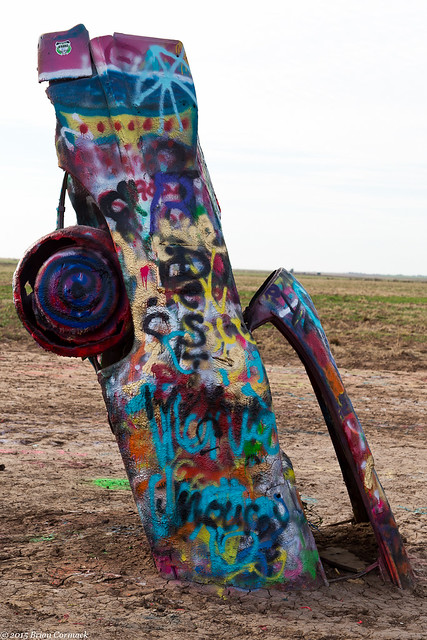
We continued on, heading further west towards New Mexico. I stopped at this old silo in the small town of Landergin, which was seemed to be mostly a small collection of abandoned buildings. The silo sat empty, but the landscape beyond it was dotted with hundreds of tall wind turbines.
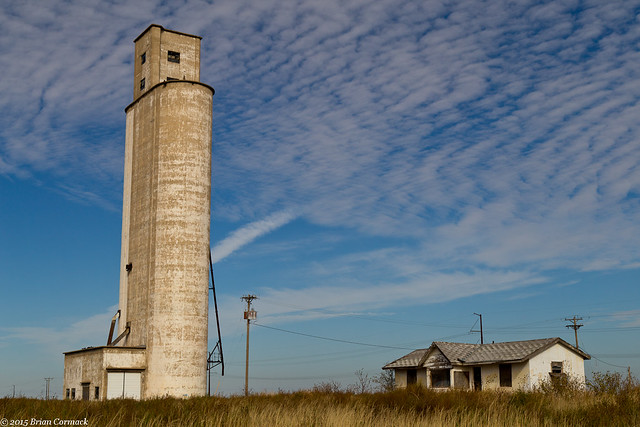
Further on we drove through the town of Adrian, which is actually the midpoint of the original Route 66. From Adrian, both Chicago and LA were only 1,139 miles away. The midpoint is marked today with a modest sign, and with a quaint old diner and gift shop. The Fabulous 40 motel next to it seems to seen better days, however.
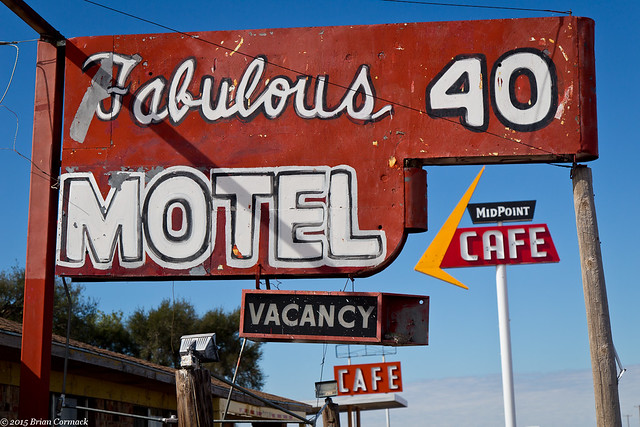
From there we stopped in Glenrio, a ghost town that is perched right on the border of Texas and New Mexico. It’s a neat spot, with several old buildings that are rusting and fading away. This old gas station sits right by the freeway off-ramp, but is empty and surrounded by overgrown weeds.
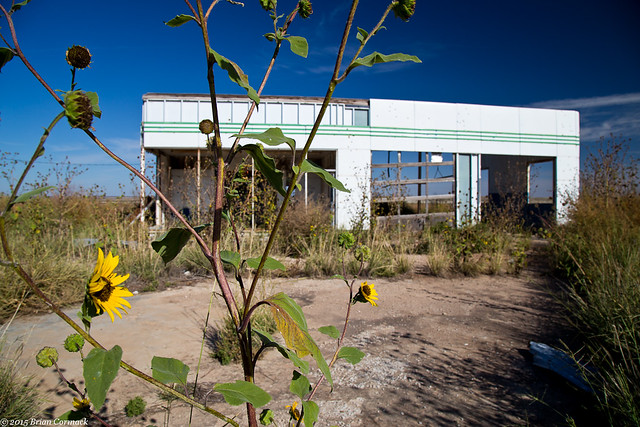
All that remains are the walls, which are slowly being filled with rust and what appear to be bullet holes.

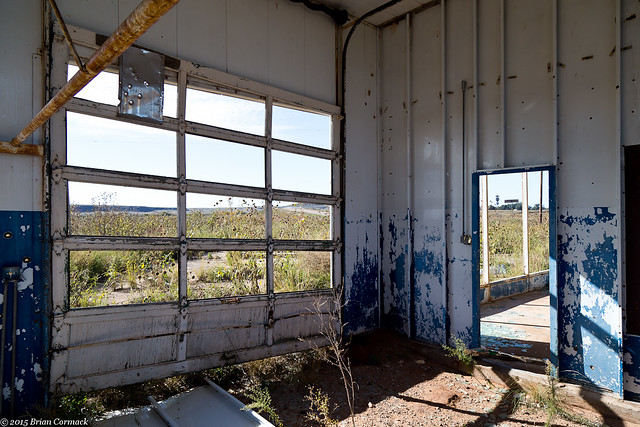
The town of Glenrio was founded in the early 1900s when the Chicago, Rock Island and Gulf Railway put a rail station here. By the 1920 the town had grown large enough to support a hotel, several cafes, stores and service stations. Route 66 passed through the heart of the town, and business was so good that the road was even widened to welcome all of the traffic through town.
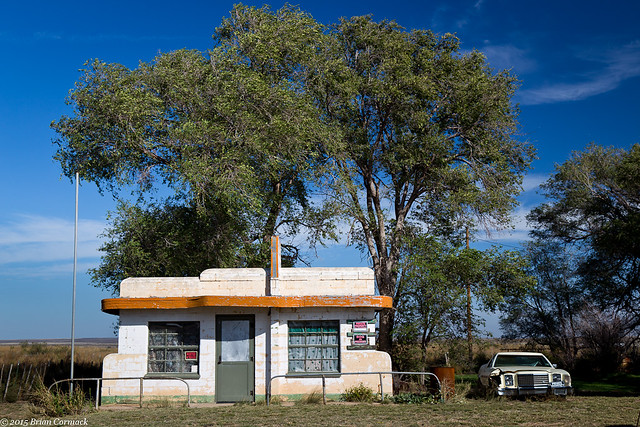
But like so many Route 66 towns, it began a steep decline when the freeway bypassed the town. The loss of highway traffic, and the closing of the rail depot in the 1950s, marked the end of Glenrio. Now all that remains are the remains of the old cafes and hotels.
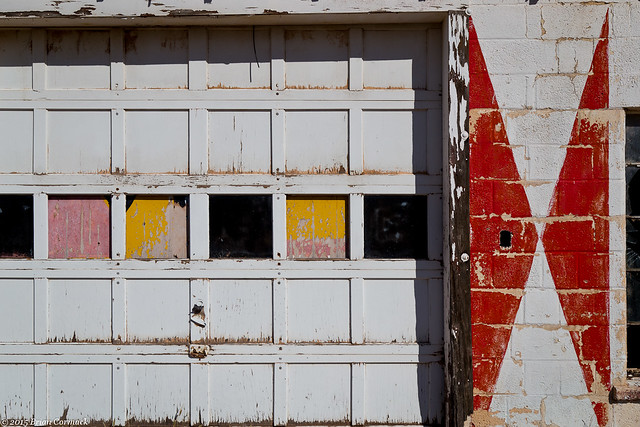
This old hotel and cafe sat perched right on the Texas-New Mexico border, and the sign advertised it as either the "First Hotel/Last Hotel in Texas."
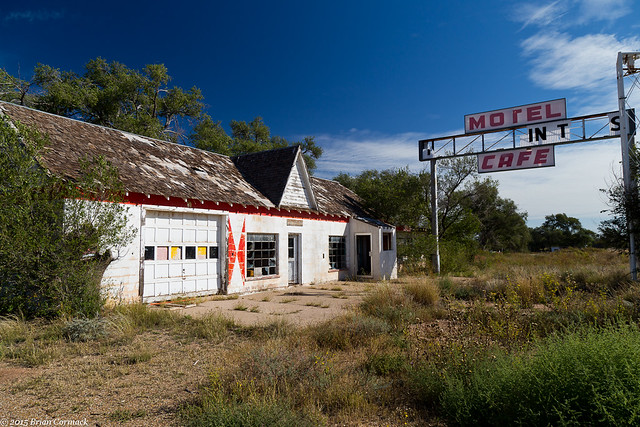
Back in the 1950s, dividers were placed in the middle of Route 66 to help with traffic. Not much other traffic came by when we were there, just one car passed by. It was eerily quiet in Glenrio, except for the hum of traffic on the nearby I-40 and a few barking dogs.

This old gas station sat on the New Mexico side of Glenrio, slowly crumbling away.
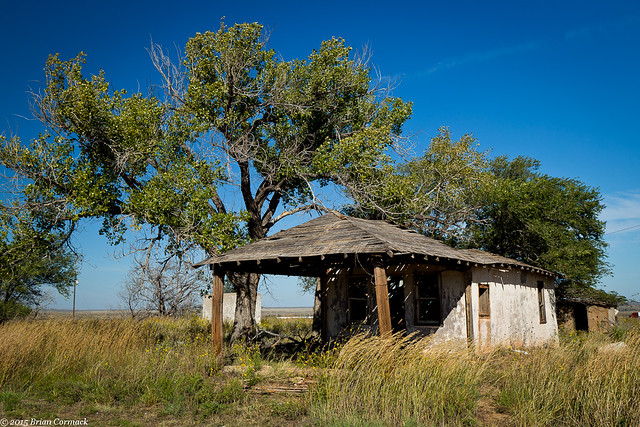
Someone sat this old chair by the front door, unevenly perched on the cracked concrete. I looked inside and the roof had collapsed, and the walls seemed to be caving in as well. Sadly this is one of many old buildings along Route 66 that probably won't be standing for too much longer.

We left Glenrio and drove into New Mexico, ready to hit a few more old Route 66 towns.

No comments:
Post a Comment